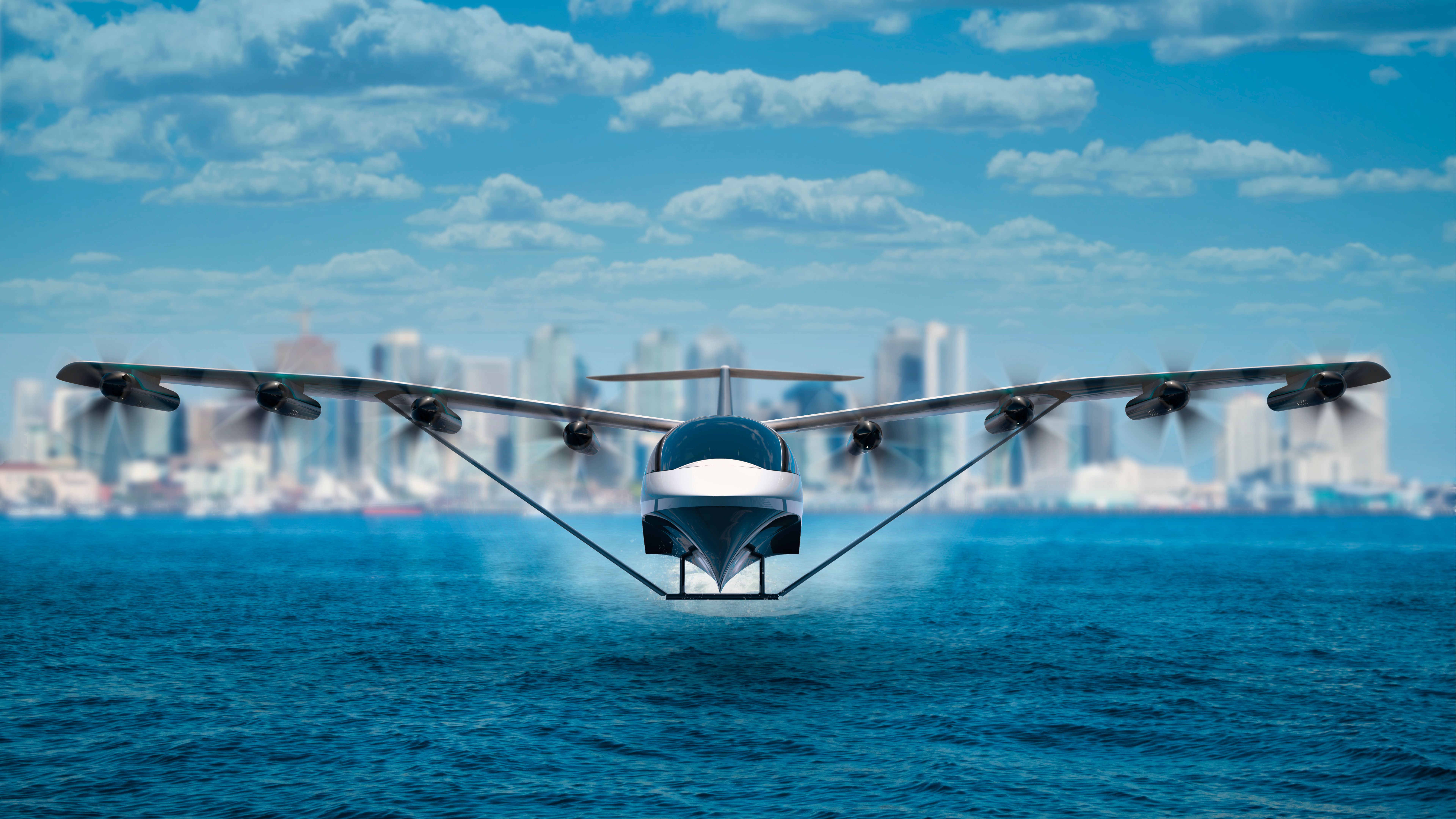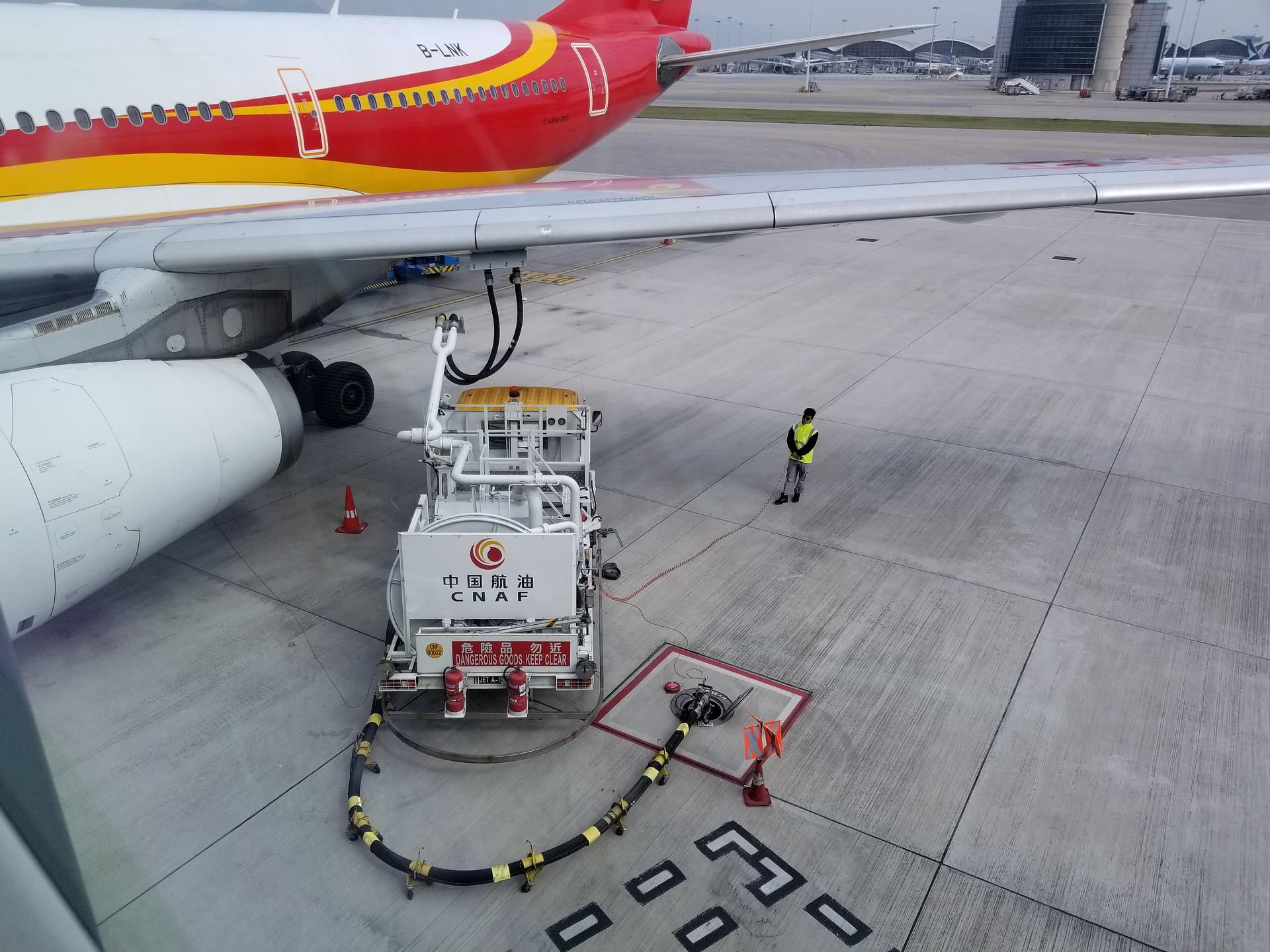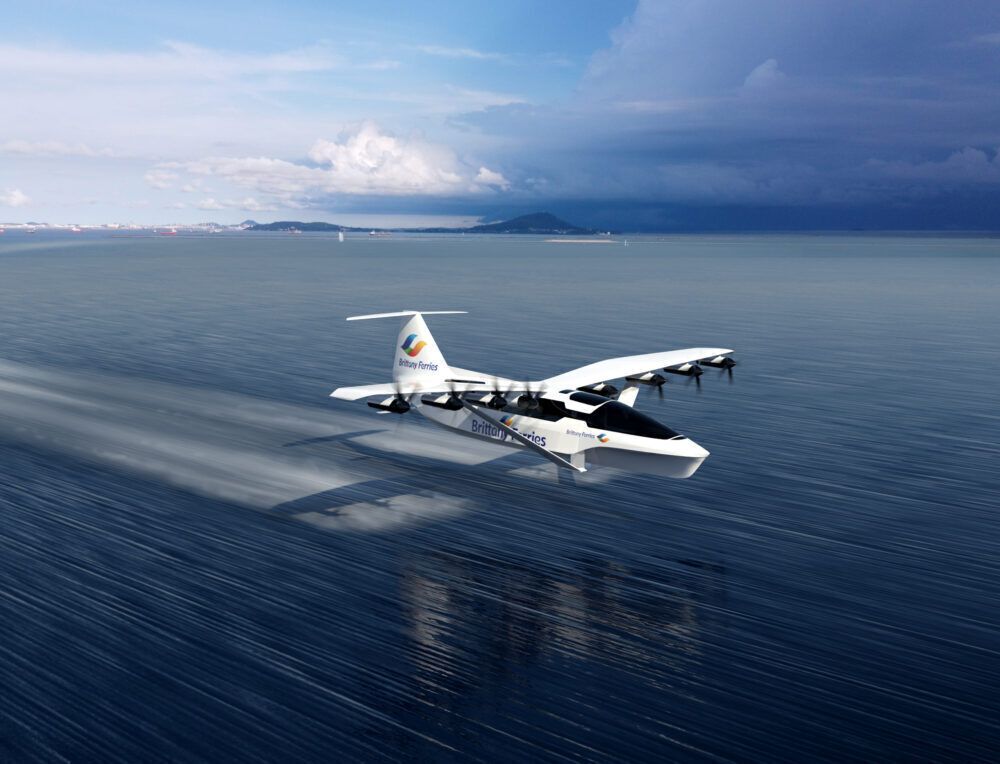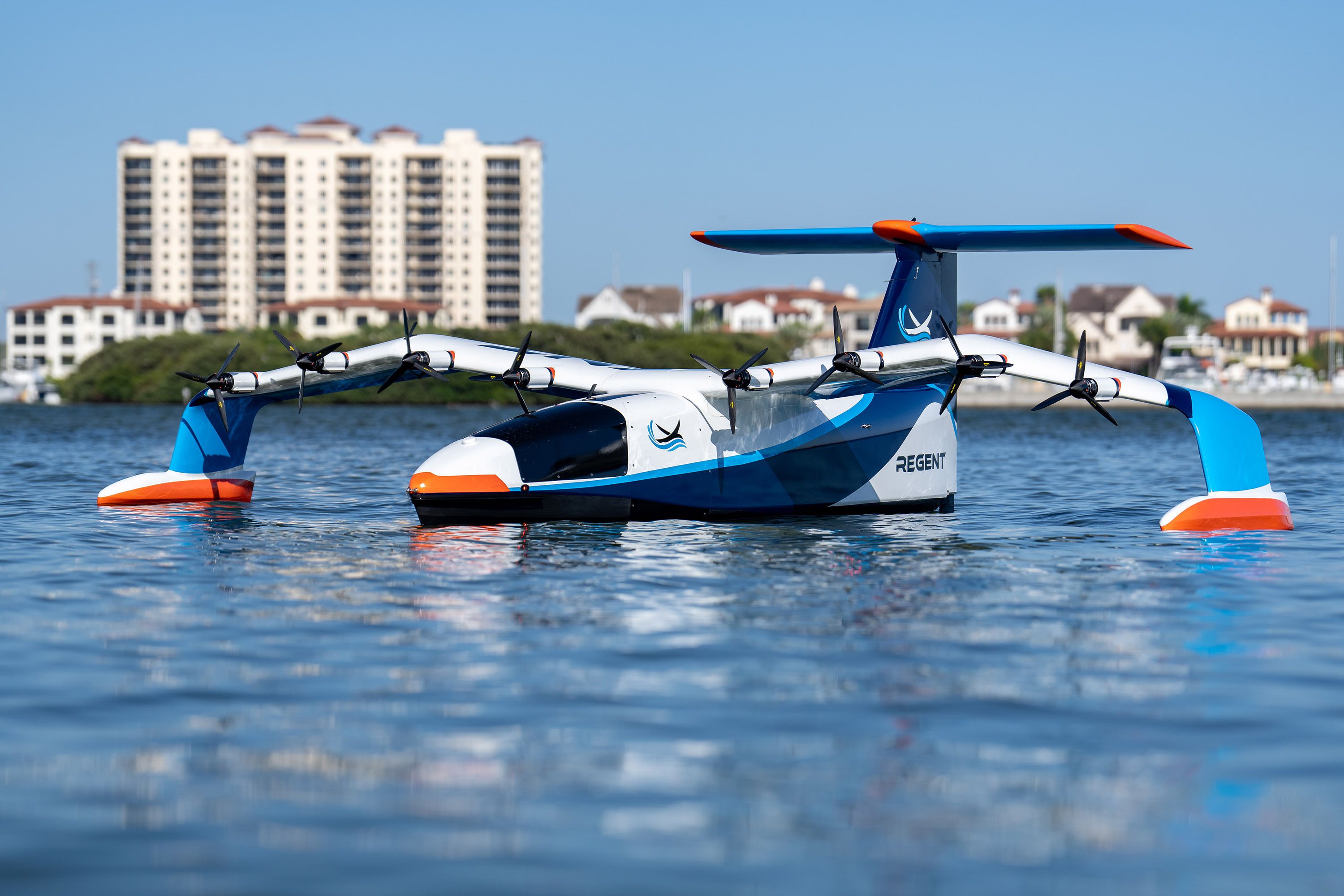The miniature prototype of the REGENT seaglider completed its first successful test flight last month in what may prove to be a historical moment for the future of sea and air travel. The Boston-based venture, which Hawaiian Airlines has heavily invested in, aims to commercialize travel by seaglider by 2025 and claims that it is on track to begin passenger trials in 2024.
The future is electric
Boasting an all-electric design, the REGENT seaglider is expected to fly routes up to 180 miles on current battery technology and 500 miles with next-generation batteries. Although the existing prototype has a wingspan of only 18 feet, the finished product is expected to have a wingspan of 65 feet and carry up to 12 passengers, making it ideal for short-hop flights such as between the islands of Hawaii.
In addition to being more sustainable, the zero-emission nature of the seaglider also makes it considerably lighter and faster than its gas-powered counterparts. Its low-altitude flights, mere meters above the surface of the ocean, also make it more efficient than traditional airplanes.
Three modes of transport
Although it most closely resembles a plane, the seaglider is actually capable of maneuvering itself in three distinct ways: floating, foiling, and flying. In shallow waters, such as when it is near a pier, the seaglider floats like a traditional boat at speeds of roughly 30 miles (50 kilometers) per hour. As it approaches deep water, it floats on a hydrofoil before accelerating to lift itself out of the water and into the air, where it reaches a maximum speed of 180 miles (290 kilometers) per hour. In addition, the seaglider is capable of opting not to fly and instead acting as a glorified ferry boat on shorter routes.
First flight
One can't help but wonder if the REGENT seaglider seems too good to be true, given how efficient, sustainable, and flexible it is in its mode of transport. Its latest prototype, which completed its first series of test flights on August 15th in Narragansett Bay, Rhode Island, aims to assuage such doubts. The quarter-scale prototype represents a proof-of-concept of the float, foil, and fly method and is based on REGENT's plans for a 12-passenger seaglider called Viceroy. Although the existing prototype is unmanned, REGENT now plans to start building full-scale manned seagliders with trials starting in 2024.
High hopes for the seaglider
Since its inception in 2018, REGENT has secured over $18 million in funding and backing from big-name investors, including Hawaiian Airlines, Thiel Capital, and Mesa Air Group. The company has also already accrued over $7 billion in orders, indicating a growing demand for the kind of maritime transportation technology that REGENT aims to provide. And given that a significant proportion of the world's major cities are located along either the coast or some other body of water, it seems reasonable to claim that the seaglider has the potential to revolutionize the future of domestic travel.
REGENT ultimately presents a compelling value proposition in the seaglider: not only is it significantly more affordable and sustainable than traditional planes, but it also offers the flexibility of being able to operate like a plane or a ferry, depending on the need. It should therefore come as no surprise that the company has managed to amass the kind of financial support that it has. But whether the seaglider is capable of revolutionizing the sea and air travel industries in the ways that it claims is something that remains to be seen. REGENT's investors will no doubt be watching closely as it continues to test its prototypes and move forward with the development of its seagliders in the years to come.




